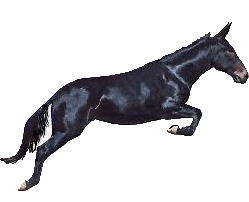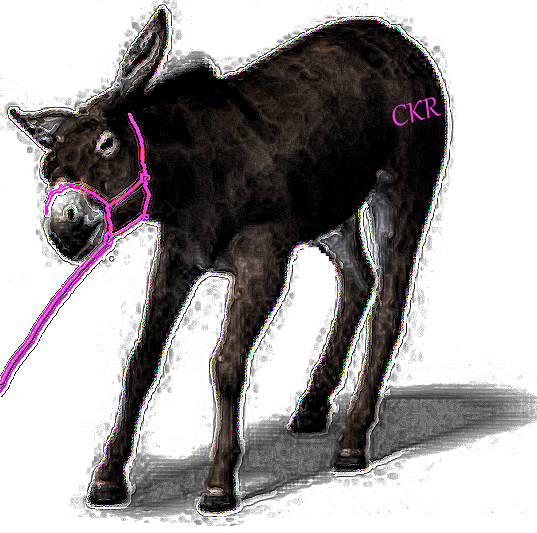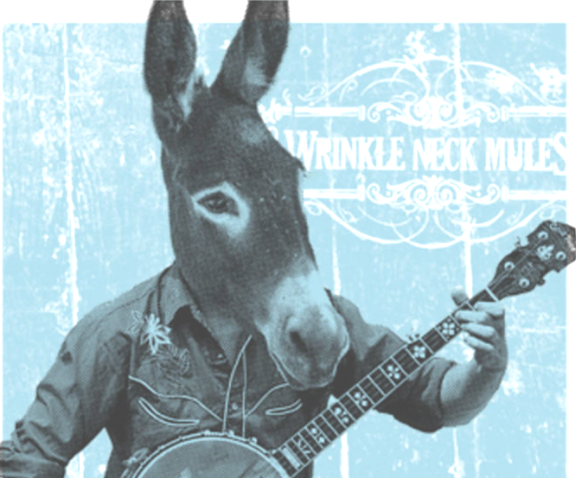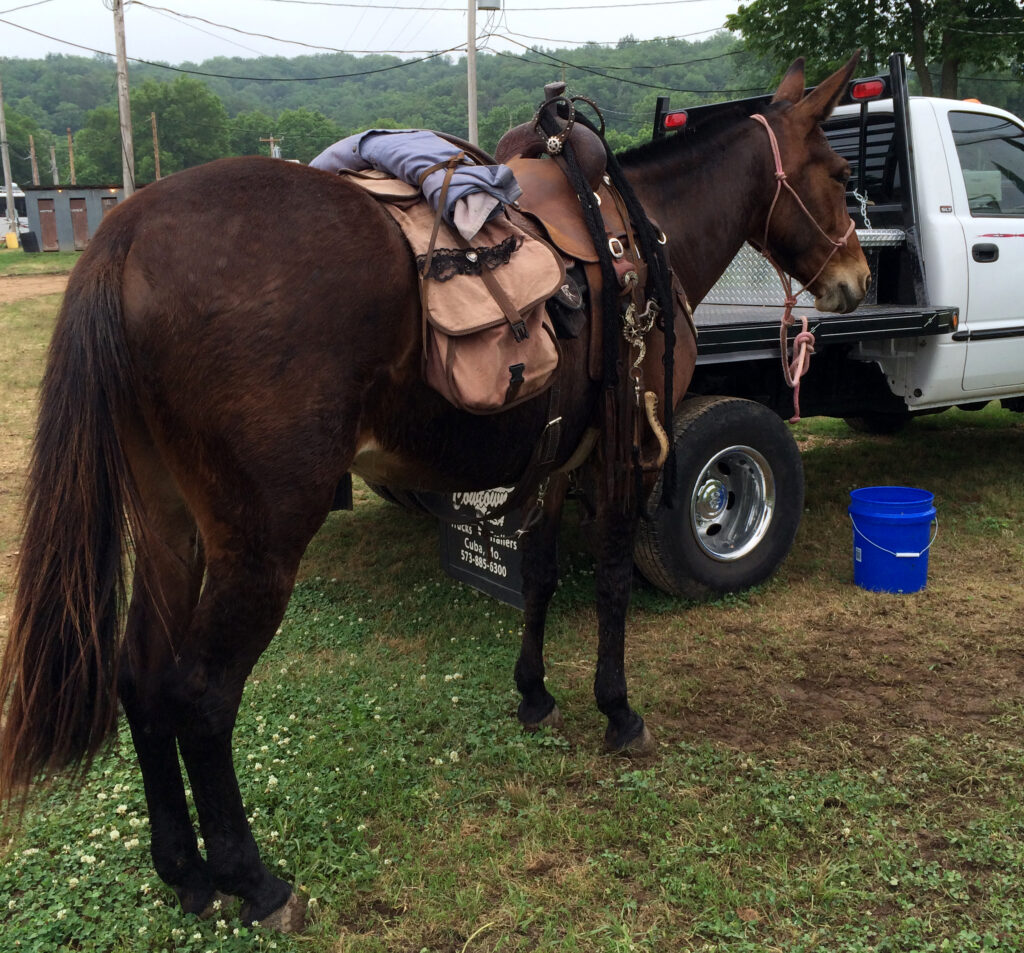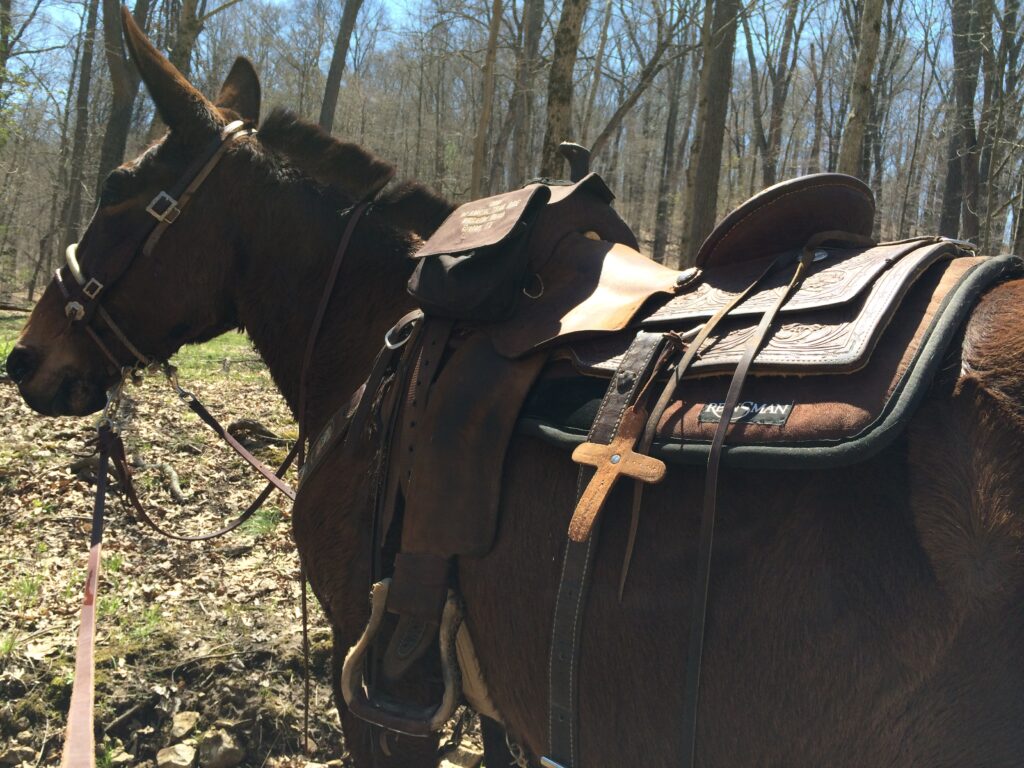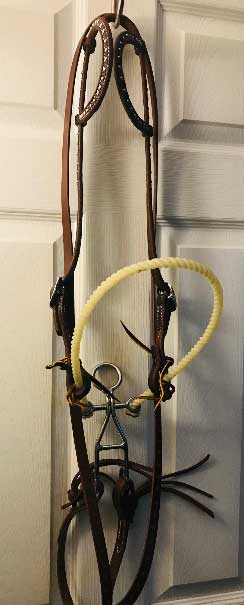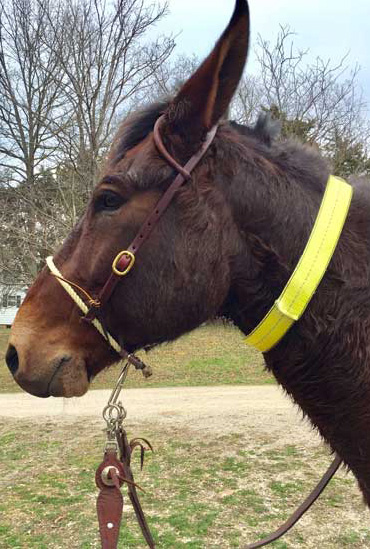Hi Cindy,
I am hoping you can help me. I have followed your website for about a year and I really like what you do. I have had mules since 1979 and I have done everything from working them in the woods to plowing, dressage, jumping, driving, and endurance riding. I have attached 2 pictures of two mules I had and jumping and trail riding. I have had horses and mules my whole life and I love mules.
Almost a year ago I got another mule after I lost my 38-year-old mule that I had for 34 years. This new mule is who I need help with. She is an appy mule. Her name is Rose, she is about 6 years old, 16 hands, beautiful looking, really good confirmation, beautiful mover, very athletic, very very sweet, excellent to handle, brush, vet, farrier, trailer, loves attention, she trail rides, jumps, lounges. She sounds perfect and she is almost. I have trained and ridden my whole life and this is the first horse or mule that I have not been able to work through a problem.
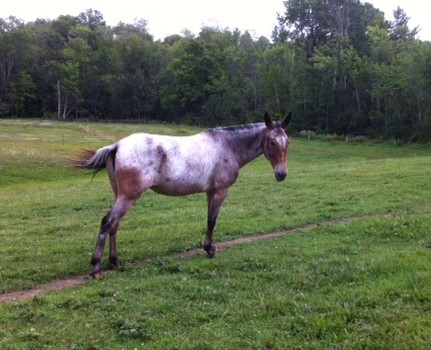
The problem is, she has figured out how to get me off of her one way or the other, either by bolting or bucking. I am small, 5ft 5in and about 115 lbs. I am very athletic but I am getting older. (I am 63 years old.) So I can’t keep getting thrown off. I am very sad but I can’t keep her.
I really like what I see and how you work with animals so I was wondering if you would like her or if you know of someone who would like her. I would give her to you if you paid for the trucking. That problem is that I live in Vermont. I know this sounds crazy but I can’t have her go just anywhere plus I need to be totally up front about the problem I am having.
I have attached 6 pictures of her for you to look at her and 2 pictures of mules I had in the past.
I know this is asking a lot of you but I do hope you will consider it.
Thank you for listening to me and my mule problem.
Please let me know what you think.
Thank you, Name Withheld
WOW. This is the heartbreaking news that troubles me when people buy mules. “She is about x years old.” Records are not adequately kept on mules or livestock. And understandably so. This is where you the buyer should educate yourself on what you are purchasing.
OK, the color thing. If you have the skill set to hang tuff and be able to school your mule to the next level, then I say, get the color of mule that your heart desires. That means, when you arrive at the barn with your new mule, you take the responsibility of giving that mule a job, which gives your mule a life. And we are not talking about a life of leisure either. Pack a sandwich, bring your canteen, and start working with your mule. You, the handler/owner will need to show leadership to that mule. And if you are lacking in this, the mule will quickly pick up on this.
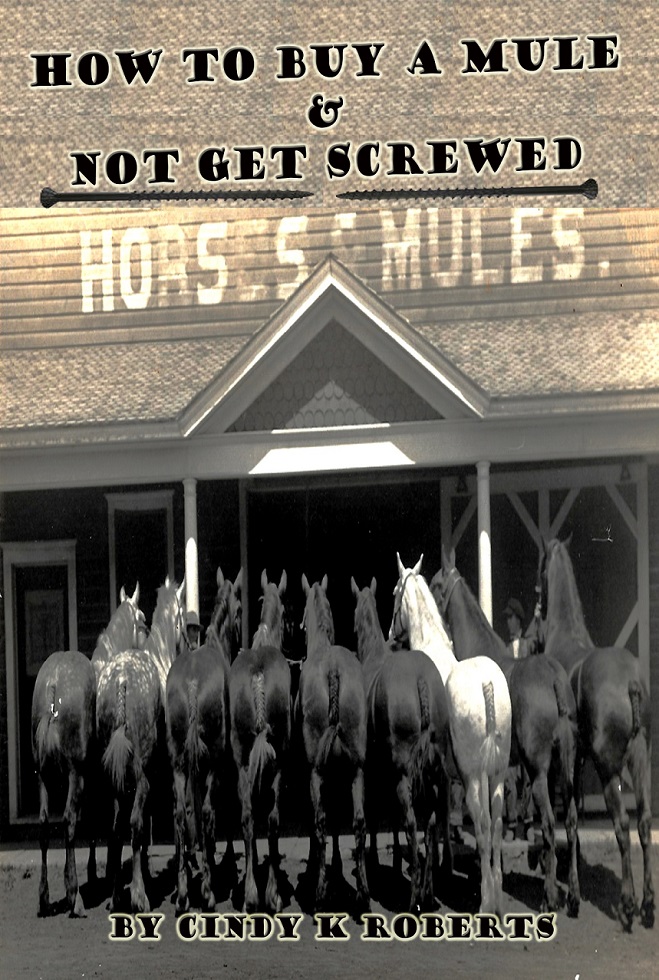
Do yourself a favor – educate yourself on buying a mule and what to do after the sale. How To Buy a Mule & Not Get Screwed by Cindy K. Roberts – written by someone that has been in the mule industry since 1985. HOW TO BUY A MULE & NOT GET SCREWED – BY CINDY K ROBERTS (everycowgirlsdream.com)

